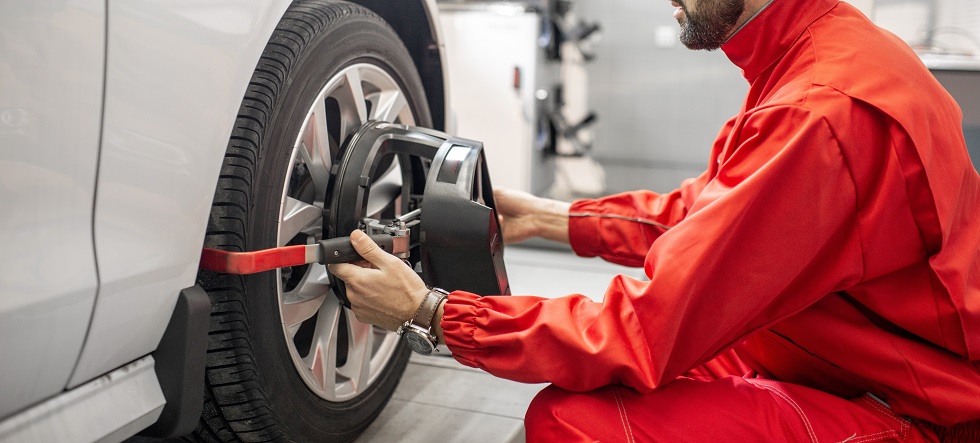All Categories
Featured

Keeping your car's tires is necessary to make sure a smooth, secure, and reliable driving experience. 2 essential solutions that are typically overlooked yet have a considerable influence on tire longevity and performance are tire turning and placement. These solutions aid keep your vehicle running efficiently and prevent unequal tire wear that can influence both safety and security and gas economic climate. Let's dive into what tire rotation and alignment are and why they are very important for your automobile.
What Is Tire Turning? Tire rotation is the process of relocating your tires from one placement to another to ensure they put on uniformly. Given that your automobile's tires operate at different prices depending upon their placement (front tires versus rear tires), turning them routinely helps to distribute the wear equally, bring about a longer lifespan for your tires.
Tires on the front axle have a tendency to put on more promptly than those on the back axle, especially in front-wheel-drive cars and trucks, where the front tires manage both guiding and power. On the other hand, rear tires might wear erratically depending on the car's weight distribution and driving problems. By revolving your tires every 6,000 to 8,000 miles (or as advised by the manufacturer), you'll make sure an extra balanced wear pattern.
What Is Tire Placement? Tire placement, likewise referred to as wheel placement, describes readjusting the angles of your car's wheels to the supplier's specifications. Proper alignment guarantees that your tires are aiming in the appropriate direction, and it aids maximize tire life and improve lorry handling. There are three major aspects of positioning: camber, wheel, and toe.
Camber describes the tilt of the tires from the front of the car. If your tires are tilted excessive internal or exterior, it can cause irregular wear. Caster describes the angle of the guiding axis when viewed from the side of the cars and truck. This influences the security of the steering, specifically when driving straight. Toe refers to the angle at which the tires direct internal or external when viewed from above. This affects just how your car tracks when traveling. A correct alignment ensures that all four tires are aiming directly in advance and are angled appropriately. Misalignment can arise from hitting fractures, visuals, or merely from the wear of suspension elements in time.
Why Tire Turning and Alignment Matter. Extended Tire Life. Both tire turning and placement aid prevent irregular tire wear. When your tires use uniformly, they last much longer, which can save you cash over time by lowering the need for premature substitutes.
Improved Safety And Security. Appropriate tire turning and positioning enhance lorry security and handling. Misaligned tires or erratically used tires can negatively impact your capacity to steer and stop your vehicle, specifically in emergency scenarios. Routine maintenance guarantees your tires carry out efficiently, giving a much safer driving experience.
Better Gas Effectiveness. If your tires are not aligned properly, they might drag versus the road surface, creating resistance. This added friction can minimize fuel efficiency, creating your lorry to eat more gas. Routine tire placement makes sure that your lorry relocates effectively, boosting gas mileage.
Boosted Convenience. Misalignment or erratically used tires can bring about a rougher ride, as your auto may draw away or cause resonances. By keeping your tires turned and aligned, you'll delight in a smoother and more comfy driving experience.
Signs That Your Tires Need Rotation or Positioning. It's essential to remain sharp for any kind of signs that your tires require turning or positioning. Watch out for these common signs:
Uneven Tire Use: If you discover that a person tire is significantly a lot more used than the others, it might be time for a rotation or positioning. Steering Pull: If your automobile draws to one side while driving right, this might suggest imbalance. Resonances: If you really feel resonances in the steering wheel or the vehicle itself, maybe an indication of misalignment or uneven tire wear. Screeching Tires: Uncommon tire sound can likewise indicate inappropriate positioning or the requirement for a tire rotation. How Commonly Should You Turn and Align Your Tires? Tire turning need to usually be done every 6,000 to 8,000 miles or as specified in your car's owner's guidebook. It's an excellent concept to revolve your tires during every oil modification, as this will certainly aid you remain on top of regular upkeep.
As for positioning, it does not need as frequent solution. Normally, positioning must be inspected a minimum of when a year or whenever you see concerns like pulling away or resonance. You may likewise require placement if you have actually struck a big crater or aesthetic, which can toss your wheels out of placement.
Verdict: Maintain Your Tires in Leading Shape. Tire rotation and positioning are crucial services that keep your lorry running smoothly, safely, and successfully. By making the effort to have your tires turned and lined up frequently, you're purchasing your vehicle's performance and longevity, while additionally enhancing your safety and security when driving. Remain aggressive with tire maintenance, and your car will thanks with far better fuel economic climate, enhanced handling, and prolonged tire life.
Latest Posts
Uncover Top Car Repair Services in Chicago – Drive with Confidence
Explore Your Financial Partner at WyHy – Top Benefits for Your Financial Goals
How Chicago Drivers Select Montclare Auto Repair for Reliable Service and Big Savings
More
Latest Posts
Uncover Top Car Repair Services in Chicago – Drive with Confidence
Explore Your Financial Partner at WyHy – Top Benefits for Your Financial Goals
How Chicago Drivers Select Montclare Auto Repair for Reliable Service and Big Savings